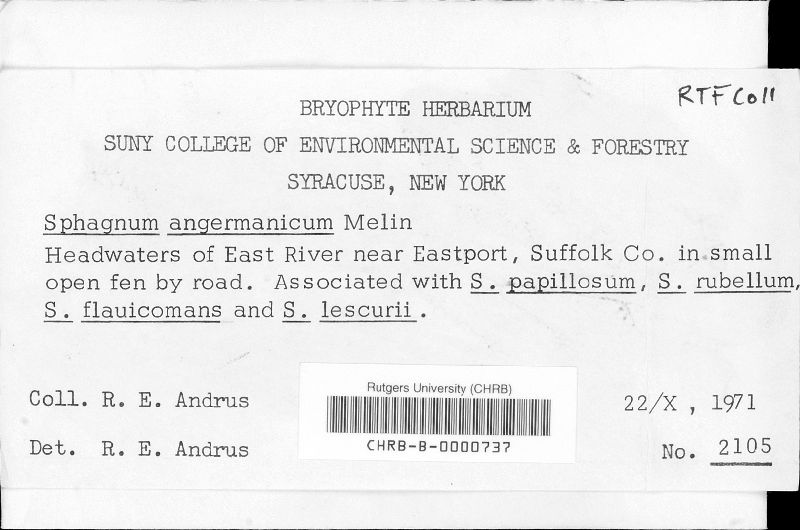Sphagnum angermanicum
|
|
|
|
Family: Sphagnaceae
|
Plants moderate-sized, soft and lax, capitulum large with head branches that are typically distinctively blunt and transversely flattened; usually pale green with a weak purplish coloration evident late in the growing season, often with a weak metallic luster when dry. Stems pale green to purplish; superficial cortical cells aporose. Stem leaves lingulate to spatulate, widest above middle (1.5 times as wide as the base), 1.5-2.5 mm, apex obtuse and dentate to lacerate; border entire and little broadened at base, hyaline cells elongated-rhomboid, normally 1-septate, strongly fibrillose in distal portion, convex surface with numerous large pores and resorption gaps in apical angles, concave surface with large resorption gaps below and large resorption pores above. Branches unranked, terete. Branch fascicles with 2 spreading and 1-2 pendent branches. Branch leaves ovate, 1.3-2.5 mm, straight, not concave; apex weakly involute, broadly truncate with 6-10 conspicuous teeth; border entire; hyaline cells on convex surface with elliptic pores (4-8 per cell) along the commissures, concave surface with large round pores in distal half and proximal portion of cells. Sexual condition dioicous. Spores 26-34 µm; finely granulose-roughened. Minerotrophic, hydrophytic; low to moderate elevations; low to moderate elevations; N.B., Nfld. and Labr. (Nfld.), N.S., Que.; Maine, Mass., N.H., N.J., N.Y.; Europe. Sporophytes of Sphagnum angermanicum are rare. This is a species associated with typically poor fen species such as S. flavicomans, S. bartlettianum, S. papillosum, S. pulchrum, and S. rubellum. It is usually easily recognized by its pale color and blunt, short and flattened capitulum branches, and also is limited to wetter microsites than most species of sect. Acutifolia and rarely forms hummocks. Spore characters are taken from H. A. Crum (1984).
|

